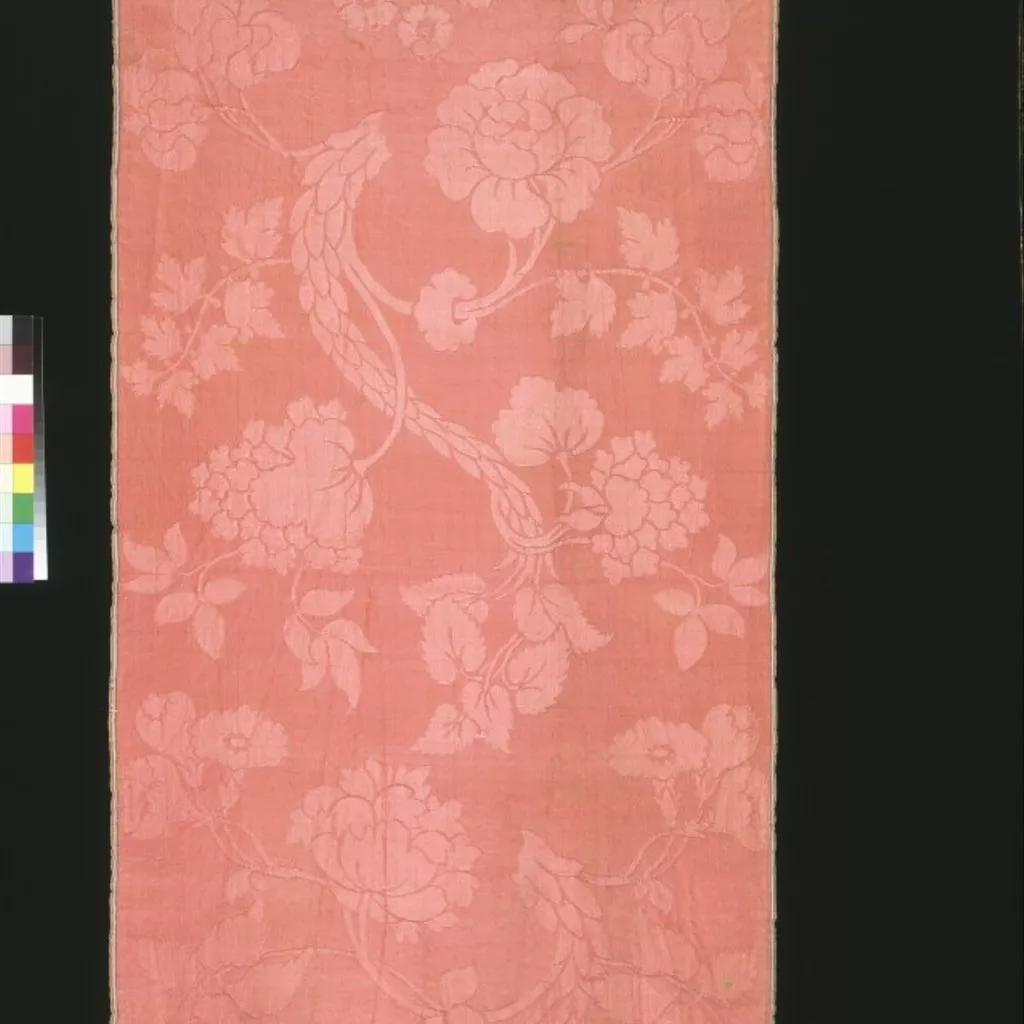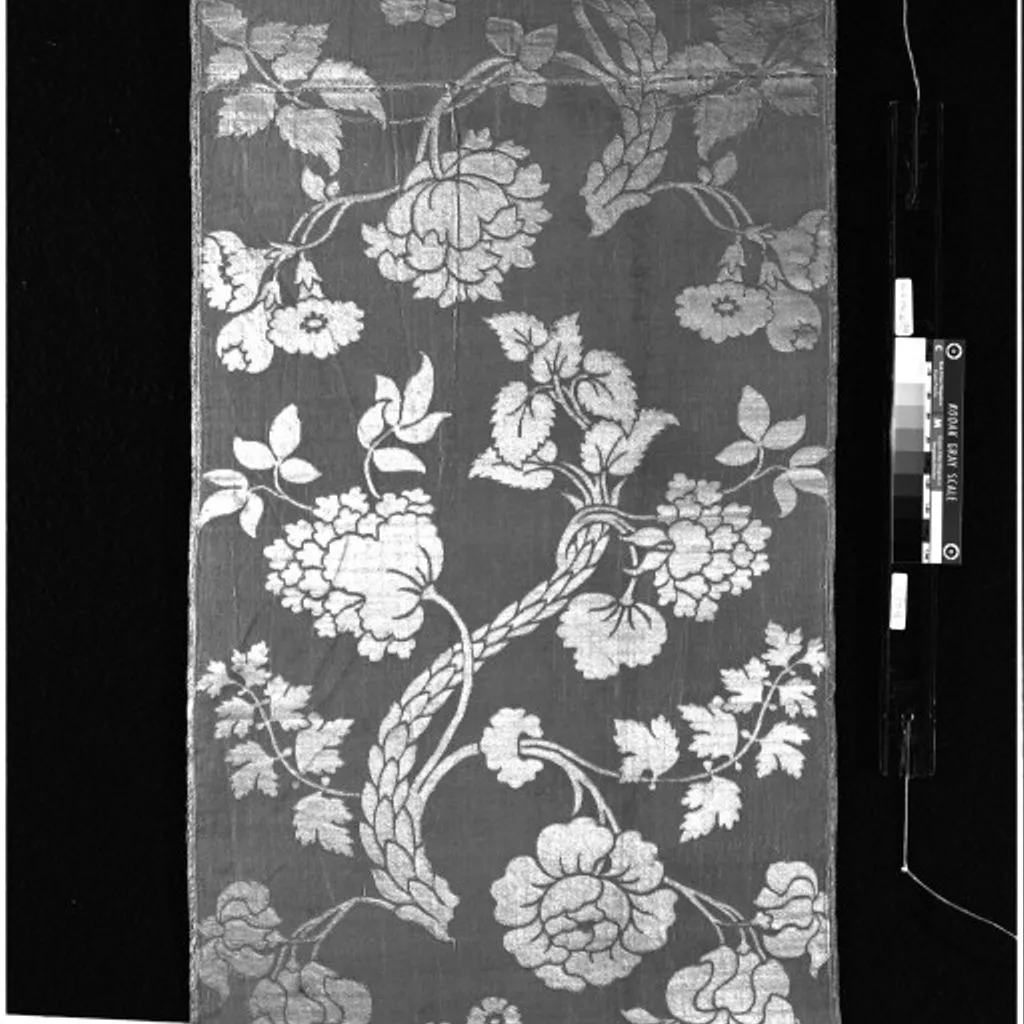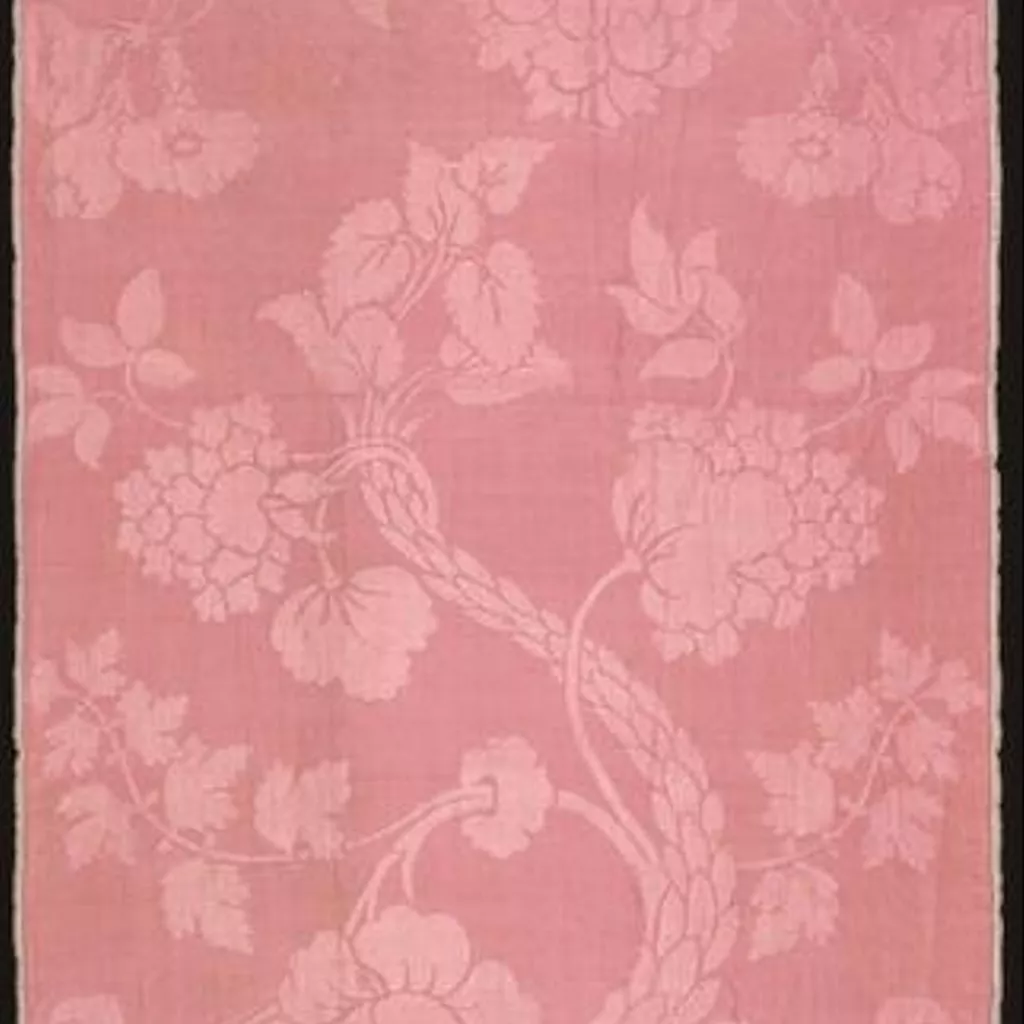1752, Spitalfields
1752, Spitalfields
- Identifier
- T.346A-1975
- Carried out by
- Garthwaite, Anna Maria (http://data.silknow.org/activity/designer)
- Collection
- Technique
- Embroidery 87%

- Embroidery 93%
- Embroidery 75%

- Embroidery 94%
- Embroidery 75%

- Embroidery 87%
- Depiction
- Floral motif 50%

- Floral motif 74%

- Floral motif 73%

- Vegetal motif 64%

- Floral motif 50%
- Dimension
- 96 cm (length)109.855 cm (length)50.5 cm (width)48.895 cm (width)
- Production time
- Production place
- Type of object
Description
This silk fabric is a damask. Damask is a type of weave whose effect depends on the differing play of light on its pattern surfaces, which alternate between the smooth face and the contrasting reverse of satin weave. With the importance of light reflection it is particularly effective when woven in silk, though it was also woven in worsted (wool). It was widely used as a dress fabric in the early and mid-18th century, for women's gowns and men's nightgowns (informal wear at home).
Design & Designing
Because the effect of damask was more subtle than multicoloured silks, designs for silk damasks were generally on a larger scale. A contemporary handbook to art and manufacture, George Smith's Laboratory or School of Arts, commented: 'Damask designs require the boldest stroke of any; the flowers and leaves should always be large and the small work omitted as much as possible unless it be in the middle of a leaf or flower.' This silk demonstrates that rule well.
People
Although he commissioned designs from the freelance designer Anna Maria Garthwaite for different types of silk, Simon Julins specialised in the weaving of silk damasks like this. He was listed at Booth Street in Spitalfields in a trade directory of 1763, some 61 years after his own apprenticeship, still a successful master weaver with journeymen weavers in his employment.






